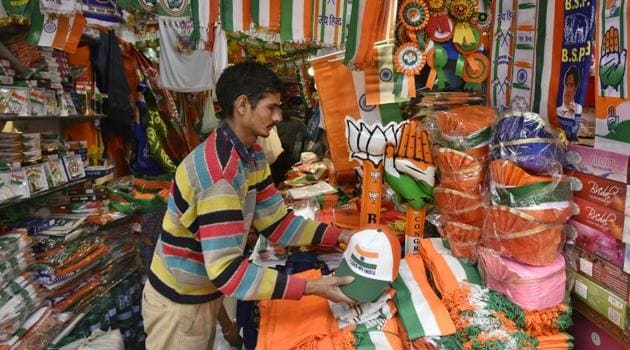Why the Modi wave is missing so far in the polls
So far this election has not seen either a pro- or anti-Modi wave. While it might change in the round of elections, it can go either way.
The first three rounds of the 2019 Parliamentary election are over but these did not witness either a pro-Modi or anti-Modi wave. There are reasons why the election so far has been without a wave. The first evidence is in the turnout: compared to the 2014 election. The same constituencies have seen a moderate or lower turnout in the first three rounds. The overall turnout in the first phase was 69.5%, merely 1.5% more than the last Lok Sabha election. The second phase witnessed a turnout of 69.4%, which was more or less the same as in the 2014 poll. The third phase saw a turnout of 67.8%, which was 1.8% higher than the 2014 election.

A wave election normally sees a higher turnout, as was the case in 1977; it witnessed a 5% increase in voting compared to the previous Lok Sabha elections held in 1971. Similarly, compared to the 1980 Lok Sabha election, the turnout in the 1984 one went up by 8%. The 2014 Lok Sabha election saw an 8% increase in turnout compared to the 2009 one. For the 2019 polls, the first three rounds have witnessed virtually no change in the overall turnout, though there may be some constituency-level variance.
The findings of the CSDS pre-poll survey gave an indication that supporters of non-Bharatiya Janata Party (BJP) units have of a lower enthusiasm for voting in the ongoing elections. Since the regional parties have larger support bases among the socially marginalised communities — who are far less vocal compared to the upper caste voters — we did not see any wave in the early rounds, simply because many of the states going to the poll were regional party strongholds. The BJP voters showed far more enthusiasm about voting on election day. It is likely that the supporters of regional parties, though less vocal but committed, turned out to vote as they always do irrespective of the electoral prospects of their party of choice. It is unlikely that those who voted for regional parties and the Congress in respective states during the 2014 Modi wave would not have voted for their parties in 2019. The same applies to BJP voters as well — the loyal supporters of the party will have voted for it in 2019 as they did in 2014.
WATCH: Analysis | Congress star power vs BJP-Sena arithmetic in bellwether Mumbai
The electoral wave seems to be missing in the first three round also because of the nature of the electoral contest in these rounds. In states such as Tamil Nadu, Kerala, Andhra Pradesh or Telangana, where the BJP is not the principal political party, the contest is largely between the regional parties. There are some other states such as Uttar Pradesh (UP), Bihar, Maharashtra and Karnataka where the BJP is the principal contestant, but the regional parties have managed to form an alliance against it. These alliances have posed a challenge for the BJP, although in different degrees. The challenge to the BJP from similar alliances of regional parties is far more in UP than in Bihar or Maharashtra. The turnout figures in these states also indicate more or less a status quo in 2019 compared to 2014. There are states like West Bengal and Odisha where the BJP hopes to make inroads, but is still facing strong resistance from the Trinamool Congress and the Biju Janata Dal respectively. It’s the resistance from regional parties in many of the states which polled in the first three rounds that has resulted in a situation where no Modi wave was visible.
But it may still be slightly early to conclude that the 2019 election will end as one without a wave. Patterns might change when states such as Rajasthan and Madhya Pradesh go to the polls as these states will witness a bipolar contest between the Congress and the BJP, or eastern UP, where leaders like Narendra Modi or Akhilesh Yadav are in the fray. We should not forget that the coming phases will witness elections in high-profile constituencies like Varanasi, Amethi, Azamgarh, Bhopal and Begusarai. The electoral contest in these constituencies might generate a wave similar to the one we witnessed in 2014. The only difference could be that while there was only a pro-Modi wave in 2014, in the current election, one should not rule out the possibility of witnessing a strong anti-Modi sentiment. The constituencies going to the polls in the next rounds will hold the key.
Sanjay Kumar is director, Centre for the Study of Developing Societies
The views expressed are personal






